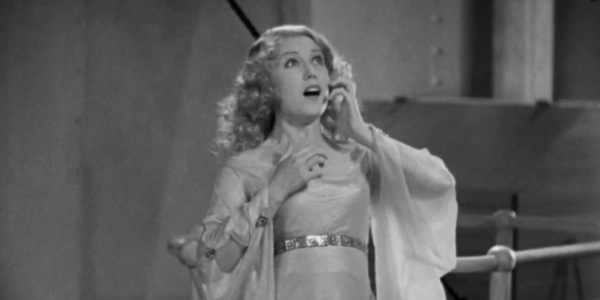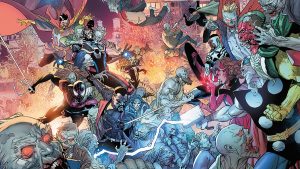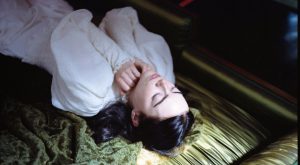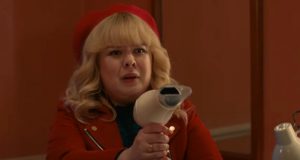
Warning: Spoiler Alert!
Horror is a genre that, throughout the years, hasn’t always gotten the widespread respect it deserves. Moreover, one of the main critiques of horror movies in the past have been targeted at their overly simplistic female lead characters. Oftentimes, these characters have been reduced to either screaming damsels in distress, or evil wenches patiently waiting to pounce. However, numerous films from the 2010s paved the way towards a present filled with more fleshed-out, complex heroines. The following examples will walk you through how horror’s portrayal of women over the years has progressed, and what this gradual change signifies.
King Kong and Cat People: The Damsel-in-Distress & The Femme Fatale
Few creature features are as influential as the original 1933 version of King Kong. In addition, Fay Wray, its star, has earned icon status for her performance as Ann Darrow. But the character Wray was given was extremely one-note. Ann, throughout that first iteration of the famous story, served to be the hapless victim, kidnapped by the natives of Skull Island and then King Kong. Though the tragedy of King Kong emerged from the sense of humanity lurking within this massive ape, and the lengths he went to to protect Ann, she still kept screaming and squirming throughout the majority of her screen time, with her relationship to Kong being given much more dimension later in Peter Jackson‘s 2005 remake. It didn’t help that, anytime Ann Darrow interacted with the men of the film, that they treated her as unintelligent and always in need of their wisdom and protection. This is more a signifier of societal attitudes at the time, but the point remains.
King Kong (1933) – source: RKO Radio Pictures
Almost a decade later – and coming from the same studio, no less – a slightly more complex, but no less troubling, character was given us with Irena Reed (Simone Simon) in Cat People (1942). In this case, the character herself wasn’t necessarily the issue, but the social climate she found herself in – an aspect that sadly makes the film relevant to this day. Throughout the story, Irena was married to Oliver Reed (Kent Smith), but refused to sleep with him, out of fear that she would kill him. This fell in line with a cautionary tale from her home country about witches who transformed into panthers under strong negative emotions, i.e. anger or sadness. By the end, despite her best efforts to suppress herself sexually, Irena’s frustration gave way while being hit on and blackmailed by her psychiatrist, Dr. Louis Judd (Tom Conway), her feline persona leaping out and killing him.
Cat People (1942) – source: RKO Radio Pictures
Society, then as now, commonly views female sexuality as something to be suppressed, to be feared, to be scorned, whereas men are championed and pressured into embracing their sexuality wholeheartedly. Though released in the early forties, the commentary of Cat People is still disturbingly true, which infuses each scene with an underlying combination of dread and tragedy. Irena’s fate is a result of not being allowed to take charge of her sexual identity by society, to the point that she felt no choice but to lash out in a much darker way. It’s telling, however, that like Ann Darrow, Irena was still portrayed as a victim of circumstance, without much more underneath the surface.
The Seventies & Early Eighties- Time Progressed, But Barely Changed
With the horror films of this particular era, women were largely portrayed in the same manner: as helpless, screaming victims. There was Sally (Marilyn Burns) from Tobe Hooper‘s The Texas Chainsaw Massacre (1974), who simply ran and ran, screaming her head off in attempts to avoid Leatherface (Gunnar Hansen). There was Mari and Phyllis from The Last House on the Left (1972), who devolved into mere victims of rape and murder by a group of psycho hillbillies. And, there was the female camp workers from Friday the 13th (1980). The only slight outlier amongst this period is Laurie Strode (Jamie Lee Curtis), from John Carpenter‘s Halloween (1978). Despite being mainly an everywoman who simply wanted to survive the wrath of Michael Myers, Strode did prove herself capable of fighting back in the film’s iconic last third.
Carrie (1976) – source: United Artists
The most fleshed-out heroine amongst this whole bunch, who by the end became a tragic antagonist, was Carrie White (Sissy Spacek) from Carrie (1976). Though not punished in the exact same way as Irena from Cat People, Carrie was consistently and bleakly threatened, punished and ridiculed for simply being, whether she had her first period – not knowing that was what it was, of course, due to her overprotective religious mother (Piper Laurie) – or was asked to prom by a popular jock. By the time she had pig’s blood poured all over her, poor Carrie felt left with no choice but to fight back in brutal fashion. After a terrifying night of carnage fueled by her telekinetic powers, Carrie was eventually stabbed in the back (literally) by her mother, killed said mom in self-defense, and then took her own life by burning down her home. The consistent messaging towards this character was purely, “You are bad, you are evil, you are not worthy”, for no real reason. The genre’s attitude toward women were blatantly clear during this era: women were either victims, or victims turned into villains.
The 2010s and Onward- A Major Step in the Right Direction
Things have certainly taken a massive step towards more nuanced, varietal lead roles for women in the past ten years or so. One particular standout was Erin (Sharni Vinson), from Adam Wingard and Simon Barrett‘s home invasion flick You’re Next (2011). Though initially seen as merely the charming girlfriend, once the carnage began, Erin quickly proved herself more than capable of retaliating against the masked killers, even becoming more of a threat towards them than they were to her. She was intelligent, and endlessly creative in her defenses, whilst never becoming an invulnerable superhero.
You’re Next (2011) – source: Lionsgate
Two years later, Scarlett Johansson provided another multidimensional portrayal in Under the Skin (2013). Portraying an alien sent to Earth to harvest the bodies of men, Johansson‘s subtle physical acting reflected a being becoming increasingly aware of what it means to be human, and the complexity that comes with that. She eventually even began to see herself as human, and became more enlightened to the nuances of the terrestrial experience. Though her fate was dismal, with a near-rapist discovering her true identity and burning her alive in response, this creature was given much more of an identity and arc than most past heroines. Not to mention that this entire film proved a poignant mirror of how women are often viewed in the real world.
When M. Night Shyamalan later released his psychological thriller Split (2017), he gave us the refreshing Casey Cook (Anya Taylor-Joy), a victim who used her smarts to finally stand up and stop her trauma from defining her. In the story, fragmented flashbacks revealed that Casey’s uncle (Brad William Henke) had molested her, an ongoing history of abuse that caused her to act out at school and pull away from others. However, learning to find any way to avoid her predator led Casey to display a similar inventiveness when captured by Kevin Wendell Crumb (James McAvoy). Though still scared, Casey dug deep and found the courage to maneuver her way through the situation, and eventually get help from the authorities (including against her uncle). Unlike the leading ladies of the thirties, forties, seventies, etc., she came out on top despite everything she’d been through.
Split (2017) – source: Universal Pictures
What Does This Suggest?
Ultimately, roles like these and more continue to evolve the horror heroine into a real human being, full of nuance and depth like anyone else. Nowadays, she isn’t just a screaming vessel for cheap thrills, or a repressed and tragic villain. Despite the one-dimensional characters that persisted for decades, more such dimensions are deservedly being given to these people, and they aren’t simply objects for men (typically) to take down, oppress or rescue, with rare exceptions. If just the preceding three examples prove anything, it’s that the future is female for the horror genre.
Does content like this matter to you?
Become a Member and support film journalism. Unlock access to all of Film Inquiry`s great articles. Join a community of like-minded readers who are passionate about cinema – get access to our private members Network, give back to independent filmmakers, and more.






